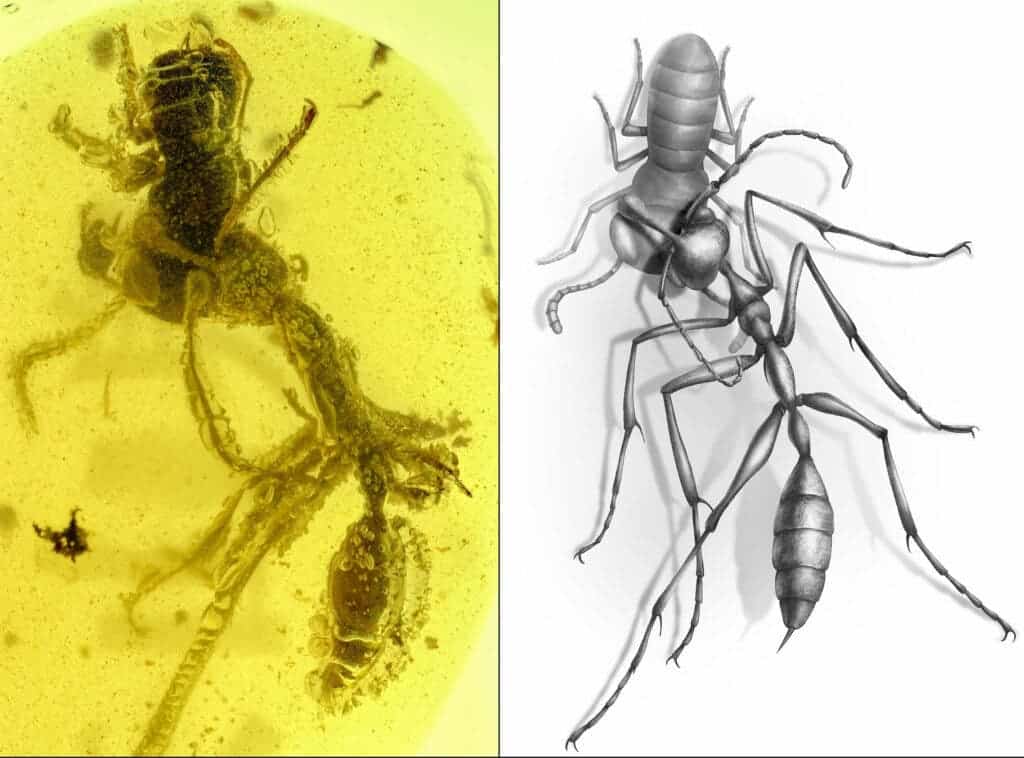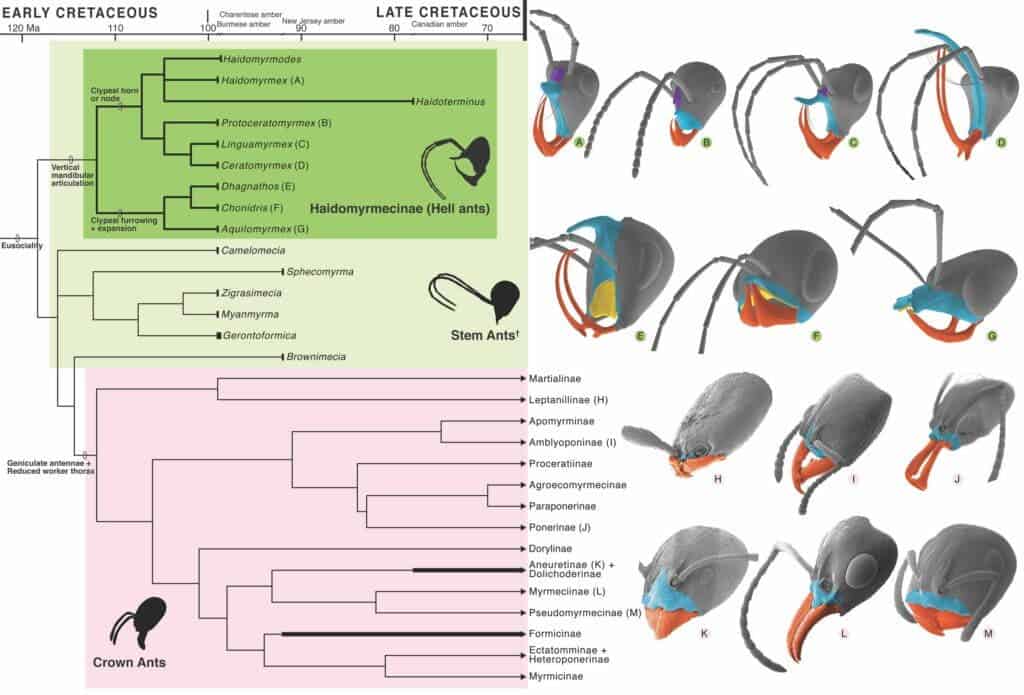
A piece of amber has frozen in time a spectacular scene from 99 million years ago. The remarkable fossil clearly shows one of the earliest known ants grasping the neck of its prey, an extinct cockroach relative. The ‘hell ant’, as researchers refer to it, attacked the insect with its two sharp mandibles and a strange, horn-like protrusion on its head.
Fossils encased in rock are often two-dimensional and you have to be an extremely skilled paleontologist in order to identify the fossilized ancient species and its defining features. Amber is totally different, though. This natural time capsule can preserve creatures in 3D for up to hundreds of millions of years (basically for as long as there’s been tree resin). Intricate detail and even soft tissue like cartilage, feathers, or pollen can sometimes be trapped inside amber.
Such an amber fossil retrieved from Myanmar offers an unprecedented glimpse into the lives of one of the first ants known to science.
The newly identified prehistoric ant, known as Ceratomyrmex ellenbergeri, used its scythe-like mandibles in a vertical motion to trap its prey. Its unusual horn-like appendages likely served to wedge cockroaches and other insects against the snapping mandibles. This is the first direct evidence of such a predatory strategy.
By contrast, modern ants grasp their prey by moving their mouthparts laterally. They also obviously lack the hell ant’s bulky headset.
“Fossilized behavior is exceedingly rare, predation especially so. As paleontologists, we speculate about the function of ancient adaptations using available evidence, but to see an extinct predator caught in the act of capturing its prey is invaluable,” said Phillip Barden, assistant professor at New Jersey Institute of Technology’s Department of Biological Sciences and lead author of the study. “This fossilized predation confirms our hypothesis for how hell ant mouthparts worked … The only way for prey to be captured in such an arrangement is for the ant mouthparts to move up and downward in a direction unlike that of all living ants and nearly all insects.”
Hell ants suddenly vanished, just like other early ant lineages, during the Cretaceous-Paleogene mass extinction event 65 million years ago. The same event caused by a cataclysmic asteroid impact also wiped out all non-avian dinosaurs.
“Since the first hell ant was unearthed about a hundred years ago, it’s been a mystery as to why these extinct animals are so distinct from the ants we have today,” Barden added. “This fossil reveals the mechanism behind what we might call an ‘evolutionary experiment,’ and although we see numerous such experiments in the fossil record, we often don’t have a clear picture of the evolutionary pathway that led to them.”
Horn-like appendages were surprisingly common among the 16 species of hell ants identified thus far. Some species similar to Ceratomyrmex used their elongated horns to grasp prey externally, while others such as Linguamyrmex vladi (named after Vlad the Impaler) used metal-reinforced horn on its head to impale prey.

Based on the morphological analysis performed by Barden and colleagues, the earliest hell ant ancestors must have first moved their mouthparts vertically. This arrangement allowed the mouthparts and head to function together in a way that was totally unique to this now-extinct lineage.
“Integration is a powerful shaping force in evolutionary biology … when anatomical parts function together for the first time, this opens up new evolutionary trajectories as the two features evolve in concert,” explained Barden. “The consequences of this innovation in mouthpart movement with the hell ants are remarkable. While no modern ants have horns of any kind, some species of hell ant possess horns coated with serrated teeth, and others like Vlad are suspected to have reinforced its horn with metal to prevent its own bite from impaling itself.”
Questions this remain as to why this amazing lineage of ant predators went extinct after being successful for 20 million years, whereas the ancestors of modern ants went on to survive and flourish to this day. To cast more light on the extinction of hell ants, Barden and colleagues plan on seeking other species from newly found fossil deposits.
“Over 99% of all species that have ever lived have gone extinct,” said Barden. “As our planet undergoes its sixth mass extinction event, it’s important that we work to understand extinct diversity and what might allow certain lineages to persist while others drop out. I think fossil insects are a reminder that even something as ubiquitous and familiar as ants have undergone extinction.”
The findings appeared in the journal Current Biology.


